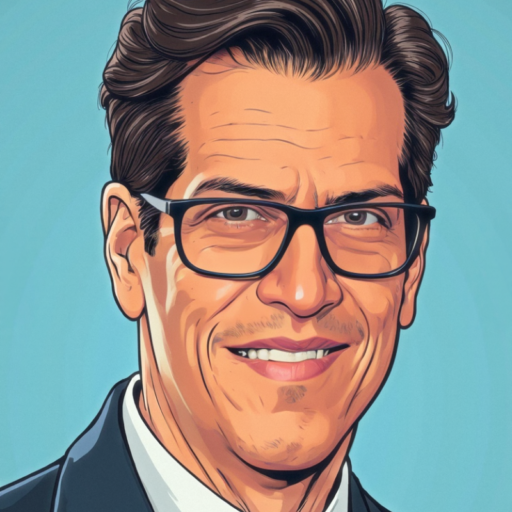Neurodivergent people make up 15-20% of the total U.S. population but as a group face unemployment rates of 30-40%. Tapping into this well of potential requires neurodiversity to be a critical part of workplace inclusion strategies. But while some organizations have made progress on paper, there’s still a major gap when it comes to practical, day-to-day support—perhaps especially from the people who have the most influence on team dynamics: managers.
So how are HR leaders helping managers become more confident and competent in supporting neurodiverse team members? We asked members of the Senior Executive HR Think Tank to share what’s working and what needs to change. From embedding inclusion into hiring training to developing individualized support plans, these leaders are building systems that go beyond awareness to real accountability.
“The commitment to hiring and developing neurodiverse professionals has to start from the very top and be woven into the culture of the company.”
It Starts with Leadership—and Real Empathy
For Jason Elkin, Co-Founder and Chief Innovation Officer at Equals True, this topic is deeply personal. As the parent of a child with autism—who also works at his company as a software testing intern—he understands both the opportunity and the responsibility of neuroinclusive hiring.
“This is not a one-day training for managers or teams,” Elkin says. “The commitment to hiring and developing neurodiverse professionals has to start from the very top and be woven into the culture of the company.”
At Equals True, that means building individualized plans for neurodiverse employees, starting with onboarding and continuing throughout the year. It also means investing in the right partners.
“Start by engaging a performance coach who specializes in this area,” he advises. “But lead with your empathy in each step. It’s not rocket science, but it will take a few stumbles to get it right.”
Supporting Neurodiversity Isn’t Optional—It’s Legally and Strategically Smart
Tracy Jackson, President and CEO of HR E-Z, sees a troubling trend: In response to growing scrutiny of DEI programs, many organizations are pulling back—leaving neurodiverse employees without the support they need.
“There is a lot of general fear due to the executive office directive to abandon DEI practices, where neurodiversity would fit perfectly,” she says. “The problem with this approach is that [discrimination laws] still exist and discrimination complaints will still happen.”
In other words, supporting neurodiverse professionals isn’t just good practice—it’s required.
Jackson encourages HR leaders to weave neurodiversity into every stage of the employee lifecycle, from recruiting to long-term development. “Managers need to be taught to recognize and adjust their approach with different learners to maximize outcomes without labeling team members or determining their capacity,” she explains.
One of her go-to recommendations? Tap into local organizations that serve neurodiverse populations. “Contacting local agencies for supporting information on populations like those with autism or ADHD is a good start,” she says.
“We’ve implemented robust and mandatory hiring leader interview training that equips managers to recognize, value and engage neurodiverse talent right from the interview stage.”
From Interview to Ongoing Development: Train Early and Keep Going
Britton Bloch, VP of Talent Acquisition Strategy and Head of Recruiting at Navy Federal Credit Union, believes neuroinclusive leadership starts well before day one on the job.
“We’ve implemented robust and mandatory hiring leader interview training that equips managers to recognize, value and engage neurodiverse talent right from the interview stage,” she says.
That includes modules on unconscious bias, inclusive interviewing techniques and how to spot the unique strengths often associated with neurodiversity—such as innovative thinking, strong pattern recognition and creative problem-solving.
But that’s just the beginning.
Through a deep partnership with the company’s accommodations team, managers also get continued training on how to support neurodiverse employees beyond hiring. That includes scenario-based workshops covering:
- Recognizing diverse cognitive and communication styles
- Providing clarity, structure and personalized feedback
- Implementing practical accommodations like flexible scheduling, customized instructions or assistive tech
- Creating psychologically safe environments, including through a formal buddy system
What HR Leaders Should Be Doing Now
Across all responses, one theme is clear: Supporting neurodiversity requires more than policy—it demands practice. That starts with awareness. According to research by Eagle Hill Consulting, 68% of U.S. employees say they’re unfamiliar with the term “neurodiversity.”
Here’s what the HR Think Tank recommends for organizations looking to build more awareness and more inclusive systems:
- Make neurodiversity part of your overall talent strategy, not a siloed initiative. Inclusion should show up in recruitment, onboarding, performance management and leadership development.
- Train early; train often. Don’t wait until someone discloses a diagnosis. Equip managers with inclusive tools before they need them.
- Invest in external expertise. Whether it’s a neurodiversity coach or partnerships with community organizations, get help from those who’ve done this work well.
- Avoid one-size-fits-all solutions. Build systems that allow for individualization, without assumptions or labels.
- Measure culture, not just compliance. Create feedback loops so neurodiverse employees can share what’s working and what isn’t.
Inclusion: A Daily Practice, Not a Policy Document
Hiring neurodiverse talent is a great start. But retention, development and meaningful engagement all depend on your managers. The best organizations aren’t just training for awareness—they’re building systems of support, led by people who are curious, compassionate and committed to getting it right.
As workplace inclusion evolves, neurodiversity can’t be an afterthought. It must be baked into the way teams lead and the way organizations grow.








